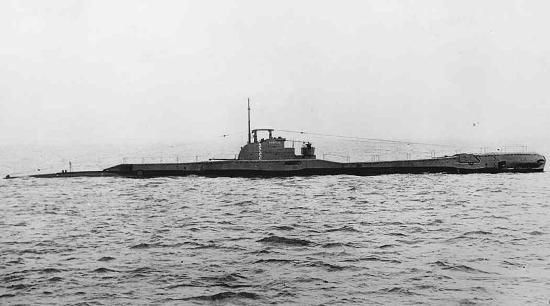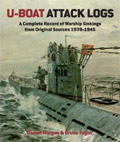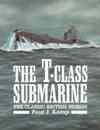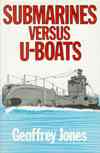| Navy | The Royal Navy |
| Type | Submarine |
| Class | T |
| Pennant | N 24 |
| Mod | First Group |
| Built by | Vickers Armstrong (Barrow-in-Furness, U.K.) |
| Ordered | 20 Jul 1937 |
| Laid down | 7 Dec 1937 |
| Launched | 25 Oct 1938 |
| Commissioned | 4 Jul 1939 |
| Lost | 10 Apr 1940 |
| Loss position | 59° 03'N, 5° 11'E |
| History | At 0157 hours on 10 April 1940 (German time, one hour ahead of GMT), the German submarine U-4 sighted an enemy submarine in Quadrat AN 3123 (approx. 59º03'N, 05º11'E). This was HMS Thistle (Lt.Cdr. Wilfrid Frederick Haselfoot, RN) apparently recharging her batteries, on course 355º, 5 knots. At 02.13 hours U-4 fires a torpedo (G7a) at 400 meters but misses, a second torpedo (G7e) is fired at 250 meters and is a direct hit. Thistle blows up and sinks. There were no survivors. Hit by U-boat |
| U-boat Attack | See our U-boat attack entry for the HMS Thistle |
Commands listed for HMS Thistle (N 24)
Please note that we're still working on this section
and that we only list Commanding Officers for the duration of the Second World War.
| Commander | From | To | |
| 1 | Lt.Cdr. Robert William Stirling-Hamilton, RN | 18 Oct 1938 | 20 Feb 1940 |
| 2 | Lt.Cdr. Wilfrid Frederick Haselfoot, RN | 20 Feb 1940 | 10 Apr 1940 (+) |
You can help improve our commands section
Click here to Submit events/comments/updates for this vessel.
Please use this if you spot mistakes or want to improve this ships page.
Notable events involving Thistle include:
The history of HMS Thistle as compiled on this page is extracted from the patrol reports and logbooks of HMS Thistle. Corrections and details regarding information from the enemy's side is kindly provided by Mr. Platon Alexiades, a naval researcher from Canada.
This page was last updated in June 2018.
The wreck of HMS Thistle has been found on 170 meters depth outside Karmöy. The tower is missing on the wreck. The discovery was made by the Norwegian Institute of Marine Research. The discovery of the wreck was made public in October 2023. Apparently their findings are confirmed by the Royal Navy.
See this website for more info. (offsite link and in Norwegian language). (1)
15 Aug 1939
HMS Thistle (Cdr. R.W. Stirling-Hamilton, RN) is docked at Portsmouth for modifications to her torpedo tubes following her trials and working-up period. (2)
9 Sep 1939
HMS Thistle (Cdr. R.W. Stirling-Hamilton, RN) is undocked. (3)
12 Sep 1939
HMS Thistle (Cdr. R.W. Stirling-Hamilton, RN) departed from Portsmouth for Portland where she arrived later the same day. Out of Portland she is to undertake some final trials and working-up. (3)
13 Sep 1939
HMS Thistle (Cdr. R.W. Stirling-Hamilton, RN) conducted torpedo discharge trials off Portland. (3)
14 Sep 1939
HMS Thistle (Cdr. R.W. Stirling-Hamilton, RN) conducted exercises and torpedo discharge trials off Portland. (3)
15 Sep 1939
HMS Thistle (Cdr. R.W. Stirling-Hamilton, RN) conducted torpedo discharge trials off Portland. (3)
16 Sep 1939
Upon completion of her final trials and working-up, HMS Thistle (Cdr. R.W. Stirling-Hamilton, RN), departed from Portland for Portsmouth. She is escorted by the destroyer HMS Skate (Lt.Cdr. A.O. Johnson, RN). (3)
19 Sep 1939
HMS Thistle (Cdr. R.W. Stirling-Hamilton, RN) conducted exercises off Portsmouth. (3)
22 Sep 1939
HMS Thistle (Cdr. R.W. Stirling-Hamilton, RN) departed from Portsmouth for Dover where she arrived later the same day. She is escorted by HMS Skate (Lt.Cdr. A.O. Johnson, RN). Later HMS Brazen (Lt.Cdr. R.H. Mills, RN) took over from HMS Skate as escort. (3)
24 Sep 1939
HMS Thistle (Cdr. R.W. Stirling-Hamilton, RN) departed from Dover bound for Dundee. Escort is provided by HMS Beagle (Lt.Cdr. R.H. Wright, RN). Later Beagle is relieved by HMS Weston (Cdr.(Retd.) A.G. Davidson, RN). The next day Thistle is taken up in convoy FN 10 that is escorted by the above mentioned HMS Weston as well as HMS Pelican (Cdr. L.A.K Boswell, RN). (3)
26 Sep 1939
HMS Thistle (Cdr. R.W. Stirling-Hamilton, RN) arrived at Dundee. (3)
28 Sep 1939
HMS Thistle (Cdr. R.W. Stirling-Hamilton, RN) departed from Dundee for her 1st war patrol. She was ordered to patrol in the Skagerrak and later of the South-West tip of Norway.
For the daily positions of HMS Thistle during this patrol see the map below.
(4)
30 Sep 1939
In the evening on 30 September 1939, HMS Thistle (Cdr. R.W. Stirling-Hamilton, RN) encountered the Swedish steam merchant Gun which had been stopped by U-3 about 30 miles northwest of Hanstholm. While investigating the ship, the submarine was attacked and missed with one torpedo by the U-boat, although the attack was not noticed and she soon left the area.
2115 hours - Sighted lights bearing 030°. Closed. Soon sighted a stopped merchant ship in position 57°27'N, 07°55'E.
2225 hours - Sighted a small dark object which might have been a submarine about 3 nautical miles away. Closed to about 0.8 nautical mile of the merchant ship. The dark object was not seen again.
2300 hours - Altered course away from the merchant ship.
0000 hours - Sighted a light near the merchant vessel again. Dived and closed again but nothing else was seen.
0110 hours (1 October) - Surfaced and proceeded.
0113 hours - Sighted a small boat making an SOS signal. Closed. This was a boat from the Swedish merchant Gun. They were ordered to leave their ship by a German submarine. They were ordered to return to their ship that was still afloat. (4)
16 Oct 1939
HMS Thistle (Cdr. R.W. Stirling-Hamilton, RN) ended her 1st war patrol at Rosyth. (4)
28 Oct 1939
HMS Thistle (Cdr. R.W. Stirling-Hamilton, RN) departed from Rosyth for her 2nd war patrol escorted by the destroyer HMS Sturdy (Lt.Cdr. G.T. Cooper, RN) as far as Dunnet Head. She was ordered to patrol in the North Sea.
For the daily positions of HMS Thistle during this patrol see the map below.
(4)
6 Nov 1939
HMS Thistle (Cdr. R.W. Stirling-Hamilton, RN) ended her 2nd war patrol at Rosyth.
(4)
18 Nov 1939
HMS Thistle (Cdr. R.W. Stirling-Hamilton, RN) departed from Rosyth for her 3rd war patrol. After the sinking of the British armed merchant cruiser HMS Rawalpindi she was ordered to patrol in the Skagerrak near Skagen.
For the daily positions of HMS Thistle during this patrol see the map below.
(4)
6 Dec 1939
HMS Thistle (Cdr. R.W. Stirling-Hamilton, RN) ended her 3rd war patrol at Rosyth. (4)
13 Dec 1939
HMS Thistle (Cdr. R.W. Stirling-Hamilton, RN) is docked in the floating dock (AFD 3) at the Rosyth Dockyard. (5)
15 Dec 1939
HMS Thistle (Cdr. R.W. Stirling-Hamilton, RN) is undocked. (5)
20 Dec 1939
HMS Thistle (Cdr. R.W. Stirling-Hamilton, RN) departed from Rosyth for her 4th war patrol. She was ordered to patrol in the Skagerrak near Skagen to intercept the German pocket battleship Deutschland which is reported to be at sea.
For the daily positions of HMS Thistle during this patrol see the map below.
(4)
4 Jan 1940
HMS Thistle (Cdr. R.W. Stirling-Hamilton, RN) ended her 4th war patrol at Rosyth. (4)
19 Jan 1940
HMS Thistle (Cdr. R.W. Stirling-Hamilton, RN) departed from Rosyth for her 5th war patrol. She was ordered to patrol in the Skagerrak. Heavy weather is encountered but no enemy ships.
For the daily positions of HMS Thistle during this patrol see the map below.
(4)
2 Feb 1940
HMS Thistle (Cdr. R.W. Stirling-Hamilton, RN) ended her 5th war patrol at Rosyth.
(4)
13 Feb 1940
Convoy ON 12.
This convoy was formed off Methil on 13 February 1940. It arrived in Norwegian waters near Bergen on 16 February 1940.
This convoy was made up of the following merchant vessels; Blythmoor (British, 6582 GRT, built 1922), Breda (Norwegian, 1260 GRT, built 1915), Carolus (Finnish, 2375 GRT, built 1919), Cathrine (Estonian, 1885 GRT, built 1904), Corvus (Norwegian, 1317 GRT, built 1921), Edna (Norwegian, 915 GRT, built 1905), Ericus (Finnish, 2114 GRT, built 1919), Finse (Norwegian, 1618 GRT, built 1916), Fulton (Norwegian, 1109 GRT, built 1905), Hammarland (Finnish, 3875 GRT, built 1911), Hardingham (British, 5415 GRT, built 1933), Havborg (Norwegian, 1234 GRT, built 1924), Karentoft (Danish, 2220 GRT, built 1920), Lysaker (Norwegian, 910 GRT, built 1919), Ophir (Norwegian, 1005 GRT, built 1906), Otterpool (British, 4876 GRT, built 1926), Romanby (British, 4887 GRT, built 1927), Salmonpool (British, 4803 GRT, built 1924), Senta (Swedish, 1497 GRT, built 1905), Signe (Finnish, 1540 GRT, built 1882), Skodsborg (Swedish, 1450 GRT, built 1919), Swainby (Norwegian, 4935 GRT, built 1917) and Trio (Swedish, 1482 GRT, built 1922).
Escort was provided by the destroyers HMS Inglefield (Capt. P. Todd, RN), HMS Ilex (Lt.Cdr. P.L. Saumarez, DSC, RN), HMS Imperial (Lt.Cdr. C.A.de W. Kitcat, RN) and HMS Delight (Cdr. M. Fogg-Elliott, RN). Also the submarine HMS Thistle (Cdr. R.W. Stirling-Hamilton, RN) was part of the escort.
On the 15th the anti-aircraft cruiser HMS Calcutta (Capt. H.A. Packer, RN) and the destroyer HMS Imogen (Cdr. C.L. Firth, MVO, RN) joined the escort. (6)
16 Feb 1940
Convoy HN 12
This convoy departed from Norway, near Bergen on 16 February 1940. The bulk of the convoy arrived at Methil on 19 February 1940.
The convoy was made up of the following merchant vessels; Activ (Norwegian , 507 GRT, built 1903), Amsterdam (Dutch, 7329 GRT, built 1922), Arnold Bratt (Swedish, 1430 GRT, built 1925), Bera (Swedish, 11286 GRT, built 1939), Columba (Norwegian, 1118 GRT, built 1929), Consul Bratt (Swedish, 1117 GRT, built 1913), Frode (Norwegian, 697 GRT, built 1917), Gottfrid (Finnish, 1592 GRT, built 1899), Hundvaag (Norwegian, 690 GRT, built 1908), Iberia (Swedish, 1399 GRT, built 1903), Kongshavn (Norwegian, 751 GRT, built 1906), Liv (Norwegian, 3068 GRT, built 1906), Maria Toft (Danish, 1911 GRT, built 1928), Meteor (Norwegian, 3717 GRT, built 1904), Mimer (Norwegian, 1143 GRT, built 1905), Rex (Swedish, 1013 GRT, built 1877), Rosten (Norwegian, 737 GRT, built 1920), Roy (Norwegian, 1768 GRT, built 1921), Sekstant (Norwegian, 1626 GRT, built 1919), Skarv (Norwegian, 852 GRT, built 1923), Stig Gorthon (Swedish, 2241 GRT, built 1924), Svanholm (British, 1321 GRT, built 1922), Vaga (Norwegian, 1612 GRT, built 1924), Viiu (Estonian, 1908 GRT, built 1917), Vim (Norwegian, 1114 GRT, built 1913) and Wipunen (Finnish, 4103 GRT, built 1913).
Escort was provided by the destroyers HMS Inglefield (Capt. P. Todd, RN), HMS Ilex (Lt.Cdr. P.L. Saumarez, DSC, RN), HMS Imogen (Cdr. C.L. Firth, MVO, RN) and HMS Delight (Cdr. M. Fogg-Elliott, RN). Anti-Aircraft protection was provided until the afternoon of the 17th by the anti-aircraft cruiser HMS Calcutta (Capt. H.A. Packer, RN) which then proceeded to Sullom Voe. The submarine HMS Thistle (Cdr. R.W. Stirling-Hamilton, RN) was also part of the convoy escort.
The destroyer HMS Daring (Cdr. S.A. Cooper, RN) joined the convoy at sea on the 16th having departed Rosyth on the 15th.
Cover for the convoy was provided from the afternoon of February 17th until early on the 18th by the light cruisers HMS Edinburgh (Capt. C.M. Blackman, DSO, RN, flying the flag of Vice-Admiral G.F.B. Edward-Collins, CB, KCVO, RN) and HMS Arethusa (Capt. Q.D. Graham, RN).
On the 18th the convoy was joined by three merchant ships from the Orkneys and by their escort, the destroyer HMS Imperial (Lt.Cdr. C.A.de W. Kitcat, RN).
Shortly before 0400 hours, on the 18th, HMS Daring was torpedoed and sunk by German U-boat U-23 about 40 nautical miles east of the Pentland Firth in position 58°40'N, 01°35'W. HMS Thistle sights the sinking destroyer and directs the other destroyers to the rescue. HMS Inglefield (appartenly returned) picked up one officer and three ratings from a Carley float and HMS Ilex another rating from wreckage, they are the only survivors. 156 of the crew are lost. HMS Ilex also hunted the U-boat without success.
Following the sinking of HMS Daring the destroyers HMS Gallant (Lt.Cdr. C.P.F. Brown, RN), HMS Nubian (Cdr. R.W. Ravenhill, RN), HMS Sikh (Cdr. J.A. Giffard, RN) and HMS Jaguar (Lt.Cdr. J.F.W. Hine, RN) were sent out from Rosyth to join the convoy and escort the merchant vessels to Methil so that the original destroyer escort could hunt the submarine. [It remains unclear to us though if HMS Jaguar actually joined the convoy as she also departed Methil as escort for an east coast convoy on the 18th.] (6)
19 Feb 1940
HMS Thistle (Cdr. R.W. Stirling-Hamilton, RN) returns to Rosyth. (6)
24 Feb 1940
HMS Thistle (Lt.Cdr. W.F. Haselfoot, RN) is docked in No.3 graving dock at the Rosyth Dockyard. (7)
27 Feb 1940
HMS Thistle (Lt.Cdr. W.F. Haselfoot, RN) is undocked. (7)
5 Mar 1940
HMS Thistle (Lt.Cdr. W.F. Haselfoot, RN) departed from Rosyth for her 6th war patrol. She was ordered to patrol in the North Sea to intercept a U-boat in position 57°16'N, 00°53'E but sights nothing.
For the daily positions of HMS Thistle during this patrol see the map below.
(4)
10 Mar 1940
HMS Thistle (Lt.Cdr. W.F. Haselfoot, RN) ended her 6th war patrol at Rosyth.
(4)
13 Mar 1940
HMS Thistle (Lt.Cdr. W.F. Haselfoot, RN) departed from Rosyth for her 7th war patrol. She was ordered to patrol off the South coast of Norway for operation R.3 and to wait for orders to enter the Baltic in a last ditch effort to help Finland. A few hours later Finland signs the armistice and operation R.3 is cancelled.
For the daily positions of HMS Thistle during this patrol see the map below.
(4)
25 Mar 1940
HMS Thistle (Lt.Cdr. W.F. Haselfoot, RN) ended her 7th war patrol at Rosyth. (4)
4 Apr 1940
HMS Thistle (Lt.Cdr. W.F. Haselfoot, RN) departed from Rosyth for Scapa Flow. (8)
5 Apr 1940
HMS Thistle (Lt.Cdr. W.F. Haselfoot, RN) arrived at Scapa Flow. (8)
5 Apr 1940
Convoy ON 25.
This convoy was formed off Methil on 5 April 1940. It was recalled on 8 April 1940.
This convoy was made up of the following merchant vessels; Ascania (Finnish, 838 GRT, built 1901), Begonia (Estonian, 1591 GRT, built 1890), Bertha (Danish, 966 GRT, built 1915), Bullaren (Swedish, 5722 GRT, built 1918), Caledonia (Swedish, 1268 GRT, built 1913), Cree (British, 4791 GRT, built 1920), Dalveen (British, 5193 GRT, built 1927), Delaware (Finnish, 2441 GRT, built 1902), Diana (Norwegian, 1154 GRT, built 1904), Einvik (Norwegian, 2000 GRT, built 1918), Eros (Norwegian, 974 GRT, built 1922), Forsvik (Norwegian, 1248 GRT, built 1919), Frey (Swedish, 1090 GRT, built 1911), Haga (Swedish, 1296 GRT, built 1918), Helder (Dutch, 3629 GRT, built 1920), Hjalmar Wessel (Norwegian, 1742 GRT, built 1935), Ibis (Norwegian, 1367 GRT, built 1918), Inger (Norwegian, 1409 GRT, built 1930), Lotte (Danish, 1420 GRT, built 1906), Magdalena (Swedish, 1265 GRT, built 1882), Magrix (British, 454 GRT, built 1938), Mette (Danish, 1909 GRT, built 1926), Nordost (Swedish, 1035 GRT, built 1918), Nyanza (British, 4974 GRT, built 1928), Orangemoor (British, 5775 GRT, built 1923), Roy (Norwegian, 1768 GRT, built 1921), Sjofna (Norwegian, 619 GRT, built 1918), Sophie (Danish, 945 GRT, built 1920), Swainby (British, 4935 GRT, built 1935), Vard (Norwegian, 681 GRT, built 1917), Veli Ragnar (Finnish, 2158 GRT, built 1914) and Vestland (Norwegian, 1934 GRT, built 1916).
On departure from Methil the convoy was escorted by the destroyers HMS Javelin (Cdr. A.F. Pugsley, RN), HMS Juno (Cdr. W.E. Wilson, RN), HMS Grenade (Cdr. R.C. Boyle, RN), HMS Eclipse (Lt.Cdr. I.T. Clark, RN) and the submarine HMS Thistle (Lt.Cdr. W.F. Haselfoot, RN). The light cruisers HMS Manchester (Capt. H.H. Bousfield, RN), HMS Southampton (Capt. F.W.H. Jeans, CVO, RN) and the AA cruiser HMS Calcutta (Capt. D.M. Lees, RN) provided close cover.
On 6 April the following ships departed Kirkwall to join convoy ON 25 at sea; Bullaren (Swedish, 5722 GRT, built 1918), C.F. Liljevalch (Swedish, 5492 GRT, built 1920), Elna E. (British, 1174 GRT, built 1925), Imperial Valley (British, 4573 GRT, built 1924), North Devon (British, 3658 GRT, built 1924), Ringulv (Norwegian, 5153 GRT, built 1903), Sarpfoss (Norwegian, 1493 GRT, built 1919), Solhavn (Norwegian, 1630 GRT, built 1918), Stanja (Norwegian, 1845 GRT, built 1915), Star (Norwegian, 1531 GRT, built 1922), Topdalsfjord (Norwegian, 4271 GRT, built 1921) and Wappu (Finnish, 1513 GRT, built 1930).
On departure from Kirkwall this part of the convoy was escorted by the destroyers HMS Janus (Cdr. J.A.W. Tothill, RN) and HMS Jupiter (Cdr. D.B. Wyburd, RN) which had come from Scapa Flow.
On joining the main convoy, HMS Janus joined the escort but HMS Jupiter was detached to search for the drifter HMS Seabreeze which was in trouble due to heavy weather and had made an SOS. This was later cancelled when a trawler met the Seabreeze and HMS Jupiter proceeded to Scapa Flow arriving there on the 7th.
In the evening of the 7th the convoy was disbanded an the ships were ordered to return to the U.K. due to enemy activity in the North Sea. The escorts were detailed for other duty.
7 Apr 1940
HMS Thistle (Lt.Cdr. W.F. Haselfoot, RN) departed from Scapa Flow for her 8th war patrol. She was ordered to patrol off the South coast of Norway, west of Utsire. (6)
8 Apr 1940
At 16.20 hours HMS Thistle (Lt.Cdr. W.F. Haselfoot, RN) is sighted by HMS Clyde (Lt.Cdr. R.L.S. Gaisford, RN) and they proceed on surface briefly in company before being forced down by aircraft. During the evening, Thistle was ordered to patrol off Skudesnes Fjord.
(6)
9 Apr 1940
At 16.04 hours on 9 April 1940 HMS Thistle (Lt.Cdr. W.F. Haselfoot, RN) missed German U-boat U-4 with a spread of six torpedoes southwest off Stavanger, Norway in position 59°00'N, 05°10'E. Thistle reports the action by radio and that she has only two torpedoes left. U-4 had sighted a torpedo track and took avoiding action and then heard three explosions of torpedoes probably at the end of their run. (6)
Media links
|
|
|
Sources
- Personal communication
- ADM 173/16183
- ADM 173/16184
- ADM 199/1848
- ADM 173/16187
- ADM 199/373
- ADM 199/373 + Rosyth Dockyard docking register
- ADM 199/2572
ADM numbers indicate documents at the British National Archives at Kew, London.
As an Amazon Associate uboat.net earns a commission from qualifying purchases.





